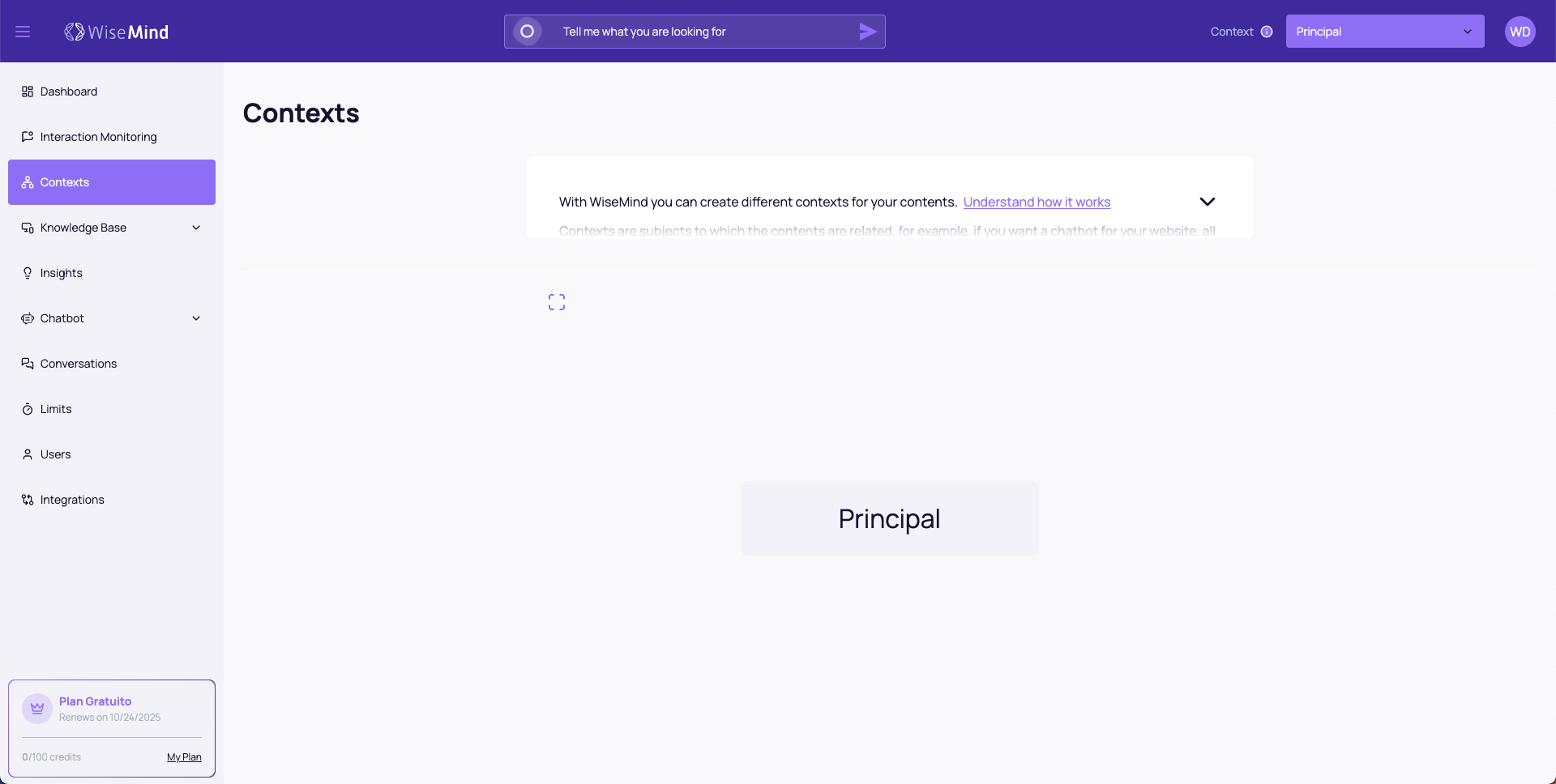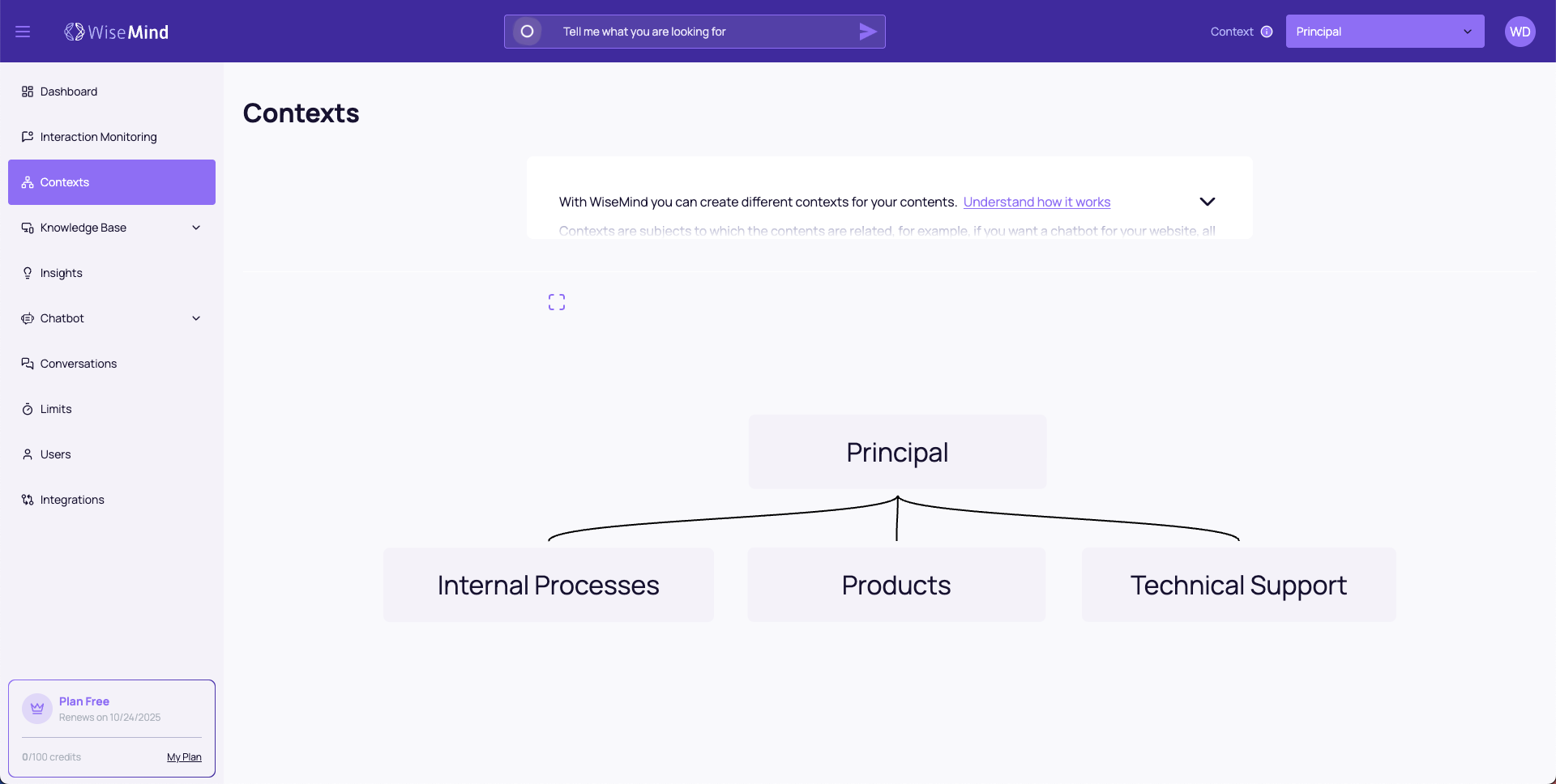Contexts
Contexts are a fundamental feature of WiseMind that allows you to organize and segment your content intelligently, creating different "knowledge universes" for your chatbots.
What are Contexts?
Contexts are subjects to which contents are related. They function as containers that group specific information, allowing you to have different chatbots specialized in distinct topics.


Practical Example
Scenario 1: Corporate Website
- If you want a chatbot for your website, all added content should be related to the "Website" context
- The chatbot will only respond about website information
Scenario 2: Internal Processes
- For an internal company processes chatbot, create an "Internal Processes" context
- The intranet chatbot will only respond about internal processes
How Contexts Work
Context Hierarchy
Connected Contexts
- "Child" contexts can see content from the "parent" context
- The opposite does not happen - "parent" contexts do not see "child" content
Connection Example:
"Website" Context (Main)
└── "Internal Processes" Context (Connected)
Result:
- ✅ "Internal Processes" chatbot responds about processes AND about the website
- ❌ "Website" chatbot responds ONLY about the website


Main Context
By default, WiseMind starts with a Main Context that is automatically created.
If you need only one chatbot for a single subject, it's not necessary to create new contexts. Add content normally to the Main Context.
Managing Contexts
Context Visualization
The contexts screen displays organized boxes with the name of each created context.
Context examples:
- Main
- News Websites
- Tests
- Customer Service
- Products and Services
Creating a New Context
- Access the Contexts screen
- Click "Create New Context"
- Define the context name
- Configure hierarchy (if necessary)
- Save changes
Editing Contexts
- Click on the context you want to edit
- Modify necessary information
- Adjust connections with other contexts
- Save changes
Removing Contexts
Don't worry! Your content will not be lost if you need to remove or rename a context. WiseMind preserves your information.
- Select the context to be removed
- Confirm the removal action
- Choose the destination for the content (if applicable)
Common Use Cases
1. Multi-category E-commerce
Main Context: Online Store
├── Women's Clothing
├── Men's Clothing
├── Footwear
└── Accessories
2. Service Company
Main Context: Company
├── Customer Service
├── Internal Processes
├── Products
└── Technical Support
3. News Portal
Main Context: Portal
├── Sports
├── Politics
├── Economy
└── Entertainment
Impact on Chatbots
Context Selection
You can switch between contexts using the context dropdown in the header.
Settings per Context
Each context maintains independent settings for:
- Knowledge base
- Chatbot appearance
- Redirect links
- Personality and instructions
Changing context in the application header affects all configurations and visualizations. Always check which context you're working in.